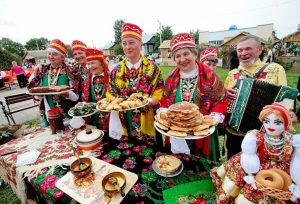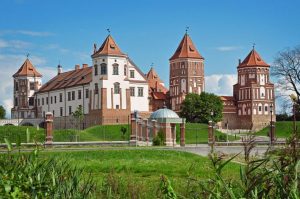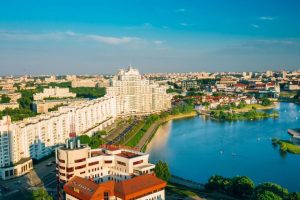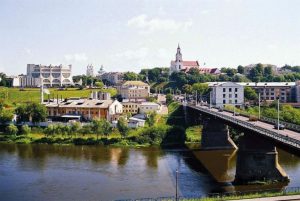Tourism in Belarus
Tourism in Belarus
Tourist places in Belarus

General information about Belarus
Most of the population of Belarus resides in the urban areas surrounding Minsk and other capital cities (regions) forming the country. More than 80% of the population is Belarusian, with significant minorities of Russians, Poles and Ukrainians. Since a referendum was held in 1995, the two official languages of the country have become Belarusian and Russian.
The Constitution of Belarus does not declare the official religion even though the main religion in the country is Russian Orthodox Christianity. The second faith is Catholic Christianity, with a much smaller number of followers, but both Easter and Christmas are officially observed and considered public holidays.
Culture and history
Belarusian literature began with religious writings between the eleventh and thirteenth centuries, represented by Cyril’s Toravian poetry from the twelfth century. By the 16th century, Polotsk resident Francesk Skaryna translated the Bible into Belarusian. It was published in Prague and Vilnius between 1517 and 1525, making it the first book printed in Belarus or anywhere in Eastern Europe. The modern stage of Belarusian literature began in the late nineteenth century. One of the most important ones is Yanka Kupala. Several prominent Belarusian writers of the time, such as Oladzimir Zelka, Kazimir Svayak, Jakob Kolas, Jmitrok Piadula and Maxim Haritsky wrote for a Belarusian-language newspaper called Nasha Niva, published in Vilnius.

After Belarus was incorporated into the Soviet Union, the Soviet government took control of the republic’s cultural affairs. The free development of literature only in the territories fell under Polish control until the Soviets took control of it in 1939. Many poets and writers were exiled after the Nazi occupation of Belarus, and did not return until the 1960s. The last attempts to revive the past of Belarusian literature appeared in the 1960s through the novels of Vasil Bekav and Oladzimir Karatievich.

Tourist areas in Belarus
Mir Castle complex (Mirsky Zamuk)
The Mir Castle complex (Mirsky Zamuk) is an outstanding example of fortification art dating back to the 16th century. It is located in the town of Mir in the Grodno region of Belarus. The construction of this Gothic-style castle in Belarus began in 1520 by Duke Ilyench. Mykolai Radziwela Palace was built with three floors along the eastern and northern walls of the fortress which has forty rooms. The walls were built surrounded by a moat. And an artificial lake was created in the south.

Minsk
The capital of Belarus, it is a modern city dominated by monumental Stalinist architecture. Many of its museums, theaters, and other cultural attractions are located on Istiklal Street, this famous square is located in close proximity to the huge KGB headquarters and the Church of the New Roman Saints Simon and Helena, also known as the Red Church.
Close to Independence Square is the Museum of the Great Patriotic War, which commemorates the nation’s role in WWII, and the National Museum of Art, which displays hundreds of local artworks.

Grodno
It is a city in western Belarus, near the Polish and Lithuanian borders. On the banks of the Neman River, the city is characterized by its greenness and also contains the old castle, which was considered a palace of the Renaissance, which dates back to the eleventh century. Nearby, a new village was built in the 18th century as a royal residence. There is also another tourist attraction in the city, which is the steadfast Kloza church from the twelfth century, which is decorated with polished stones and terracotta tiles.
